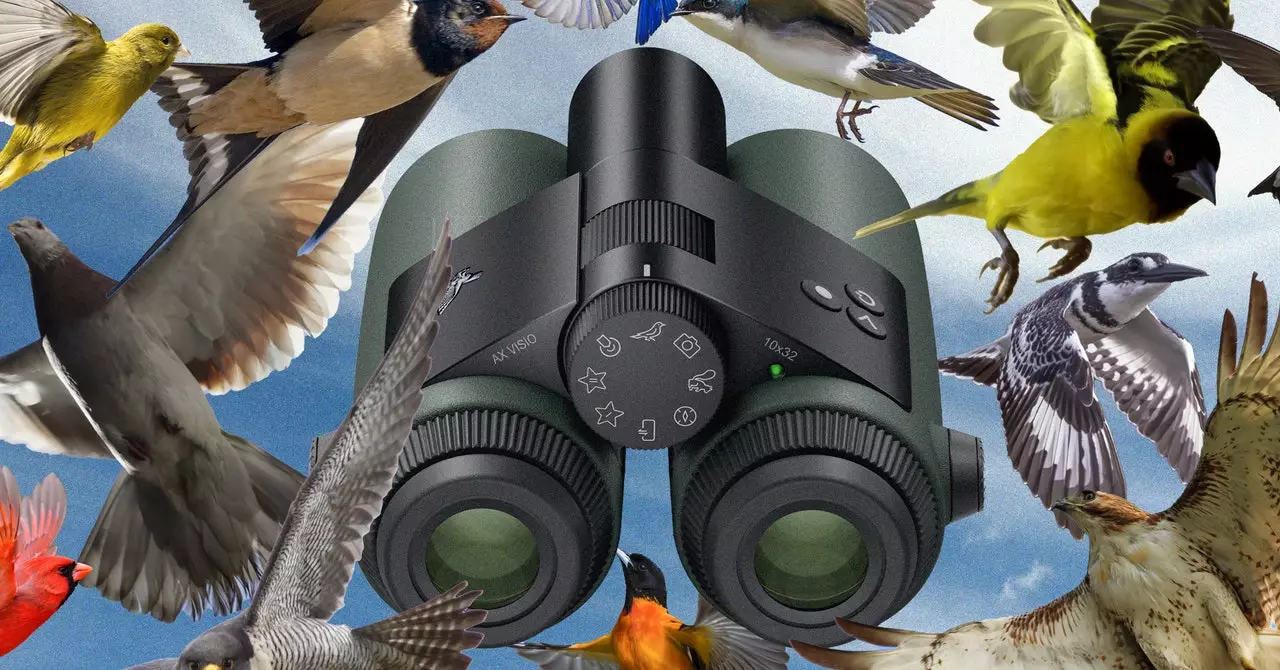The realm of birdwatching has experienced a remarkable shift with the advent of smart technology, precisely exemplified by the AX Visio binoculars. By utilizing a modified edition of the Cornell Lab of Ornithology’s well-respected Merlin Bird ID database, these binoculars potentially transform bird identification from a tedious task into an accessible and interactive experience. The integration of this comprehensive database allows birdwatchers—both novice and seasoned—to make accurate identifications with just a few prompts.
What sets the AX Visio apart is its versatility. While its bird identification capabilities extend globally, including remote locations like Antarctica, the functionality for identifying mammals and insects is currently limited to Europe and North America. This disparity underlines an intriguing facet of technology in wildlife observation: global access juxtaposed against regional limitations.
At the core of the AX Visio’s functionality lies a sophisticated mix of image recognition technology and geolocation services, powered by a built-in GPS sensor. By pinpointing your geographic location, the binoculars can streamline the identification process, presenting likely species based on the user’s immediate environment. It’s a noteworthy advancement that caters to the need for precise wildlife identification in a diverse array of ecosystems.
This synergy of technology not only broadens the horizons for birdwatchers attempting to spot elusive species but also subtly encourages a more engaged form of nature observation. It nudges users to consider their environmental context while enjoying the wonders of wildlife. The balance of cutting-edge technology and natural exploration paints a modern picture of birdwatching as both a leisurely pursuit and a scientific endeavor.
Testing out the AX Visio at andBeyond Phinda Private Game Reserve in South Africa painted a vibrant picture of its practical application. The reserve offers guests the option to rent these binoculars, with fees directed to local conservation initiatives—a commendable effort that intertwines enjoyment with sustainability. Yet, as an amateur birdwatcher, I initially felt apprehensive about the technology. Would the device be overly complicated? Would I manage to navigate its various modes?
To my pleasant surprise, the binoculars are designed for ease of use. The bridge’s mode-selection wheel is intuitively arranged, allowing seamless transitions between different identification settings. Each mode, whether it’s for birds, mammals, or insects, presents its interface in a manner that even a technology-averse observer can grasp quickly.
This user-friendliness plays a crucial role in making modern birdwatching more accessible while still preserving the element of personal discovery. As I maneuvered the binoculars, any trepidation I harbored quickly faded, replaced by excitement over their functionality.
Correct usage of the AX Visio is pivotal for successful identification, emphasizing the need for stability and focus. The experience becomes remarkably intricate when you’re trying to magnify a small creature gracefully perched overhead. As I directed the binoculars toward a malachite kingfisher, a vibrant circle appeared, confirming my focus on the right target. Once the subject filled this circle sufficiently, a simple press of the button provided instant gratification—the name of the bird materialized on the screen.
Despite the educational thrill of the experience, I noticed variability in the device’s performance. The potential for misidentification or an error message, despite a visible target, can lead to moments of frustration. At times, it can seem like the technology falters when faced with smaller species or those skillfully camouflaged within their surroundings. Such limitations remind us that while technology enhances our capabilities, it is not infallible.
The AX Visio binoculars exemplify how technology can enrich the birdwatching experience, making it more interactive and informative. With features like advanced image recognition and geolocation, users are ushered into a new era of wildlife observation that merges simplicity with scientific accuracy. It’s an exciting tool that encourages exploration, but like all technology, it has its nuances and imperfections. A perfect synergy of nature and innovation, the AX Visio not only enriches the pursuit of understanding avian life but invites a deeper appreciation of the diverse ecosystems in which they thrive. As we embrace these advancements, the future of birdwatching promises to be both engaging and enlightening.


Leave a Reply